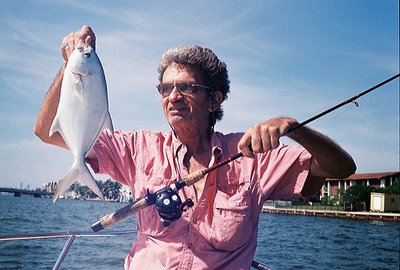A Bounty of Fish in North Biscayne Bay


Fishing for tarpon is probably the most exciting thing you can do in North Biscayne Bay. Fish in the twenty to forty pound range are fairly common in some of the deeper areas, with a resident population year round. A few fish in the hundred pound and over category are common enough to always be a possibility. Sometimes they'll move up out of the dredge holes, which were created for fill to convert swamp land into housing developments, and fan out over the grass flats in search of shrimp, mullet, pinfish, and other small edibles. Other times they'll stay in the holes, usually suspending at about 25 feet down in the 40 foot deep water.
Sonar, commonly called "fish finders", actually isn't reading the presence of a fish so much as the air filled swim bladder in the fish. Tarpon give strong readings because they have huge swim bladders. They can use this as a lung, and are constantly swimming up to the surface and "rolling", gulping fresh air, which makes it very easy to tell if there are any in the area.
Most people, though, are looking for food fish, something to catch for the frying pan, like the pompano (top photo) or one of the numerous specied of snapper (lower photo), grunts, or seatrout. Drifting over the shallow grass flats or along the channel edges will yield a wide variety of good to eat fish as well as several types of not so good to eat but exciting to catch species like big jack crvalles, barracuda, and at times tarpon. The channels themselves often have Spanish mackerel, cero mackerel and immature kingfish as well as bluefish.
The common way to fish is with live shrimp or pilchards, or with pieces of cut mullet, but I've found that a 1/4 ounce bucktail jig will catch about anything that swims in the bay. I like to retrieve them slowly, giving them very little action with the rod. In deeper water I let them sink down to the level of the fish before starting the retrieve. On the flats I start the slow retrieve almost immediately so the jig is swimming just above the top of the grass. My favorite color is pink and white with a green chartreuse being a close second. For seatrout I've found that dark purple always seems to catch the biggest fish.

0 Comments:
Post a Comment
<< Home